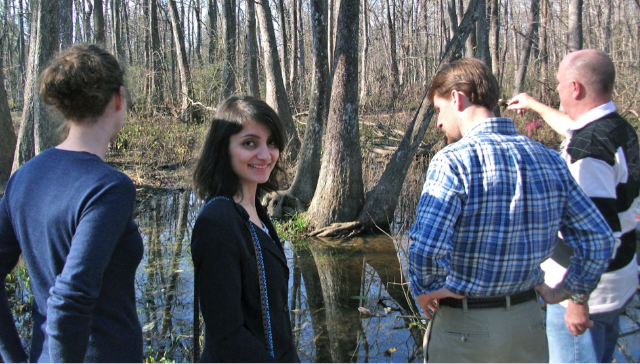Top Five Sights in Seoul: Changdeok Palace
One of the best things you can do in Seoul is to go on the free walking tours that are provided by the Seoul Metropolitan Department. They offer an exciting way to see the city, walk in the neighborhoods and learn from licensed tour guides. And what's better is you see it with interesting people. We ended up doing a fun tour to Changdeok Palace.
Changdeok Palace is the second grand palace of the Joseon Dynasty, and was built in 1405 by the King Taejong, the 3rd king of the Joseon Dynasty. . The Joseon Dynasty by the ways is the last and most recent of the dynasties.The palace gained importance starting from the time of Seongjong, the 9th king of Joseon, when a number of kings began using it as a place of residence.
We didn't go to the garden but saw a number of other sites. The first was the Donhwamun Gate, which is the main palace gate. It was built in 1412, and has a two-story pavilion-type wooden structure. It is the largest of all palace gates. Donhwamun was burned down during the Japanese invasion of 1592 and was restored in 1608. After that, you pass a bridge called the Geumcheongyo Bridge. It is the oldest bridge still extant in Seoul and was built in 1411.

It was a very personal space built so that King Heonjong could relax and read. Though it was part of the palace, King Heonjong refrained from using colorful paint decorations, Dancheong. Meanwhile, Nakseonjae was used until the most recent days.
Bangja Lee, who was the wife of the last crown prince lived here until 1989. Seokbokheon was constructed in 1848. It was built for the Royal Lady Gyeongbin who was chosen in order to give King Heonjong’s desired heir. Sugangjae was first built in 1785, later renovated in 1848 and turned into the quarters of Queen Sunwon, the grandmother of King Heonjong. Nakseonjae was originally enclosed by lines of buildings and courtyard walls, but they were removed during the Japanese occupation. In 1996 this area was restored to its original style. These are the nicest rooms as they are simple, private and provide a window into Hanok life.

Changdeok Palace is the second grand palace of the Joseon Dynasty, and was built in 1405 by the King Taejong, the 3rd king of the Joseon Dynasty. . The Joseon Dynasty by the ways is the last and most recent of the dynasties.The palace gained importance starting from the time of Seongjong, the 9th king of Joseon, when a number of kings began using it as a place of residence.
In 1592, the main palace, Gyeongbok Palace, was completely destroyed by fire during the Japanese Invasion of Korea so Changdeok became the home of the Joseon court for 270 years.
We didn't go to the garden but saw a number of other sites. The first was the Donhwamun Gate, which is the main palace gate. It was built in 1412, and has a two-story pavilion-type wooden structure. It is the largest of all palace gates. Donhwamun was burned down during the Japanese invasion of 1592 and was restored in 1608. After that, you pass a bridge called the Geumcheongyo Bridge. It is the oldest bridge still extant in Seoul and was built in 1411.
After crossing the bridge, you enter the Injeongjeon Hall, which was the throne hall of Changdeok Palace, where important state affairs such as the coronations of kings, meetings with officials, receptions of foreign envoys and royal banquets were held. Originally built in 1405, it was rebuilt in 1610 after being burned down during the Japanese Invasion of Korea in 1592, and a third time in 1804 after being destroyed by a fire.
If Injeongjeon was the symbolic main hall, then Huijeongdang was used as the actual main hall of Changdeokgung, where the king spent most of his time. The king’s office, Seonjeongjeon, was not large enough for conducting routine state affairs. As a result, Huijeongdang, which originally was the king’s bed chamber, came to serve as his workplace.
Huijeongdang was destroyed by fire in 1917, and the existing building was rebuilt with materials taken from Gangnyeongjeon, the king’s residence at Gyeongbokgung. The original Huijeongdang
depicted on the Map of the East Palace was an elegant building with a raised floor set on stone columns, and a pond in the courtyard.
The reconstructed Huijeongdang is entirely different from the original. The interior is outfitted with western features such as wooden floorboards and carpets, glass windows, and chandeliers.
Then you come across a number of rooms/halls part of Nakseonjae Complex. Nakseonjae was built as the king’s quarters in the reign of King Heonjong, in 1847.

Bangja Lee, who was the wife of the last crown prince lived here until 1989. Seokbokheon was constructed in 1848. It was built for the Royal Lady Gyeongbin who was chosen in order to give King Heonjong’s desired heir. Sugangjae was first built in 1785, later renovated in 1848 and turned into the quarters of Queen Sunwon, the grandmother of King Heonjong. Nakseonjae was originally enclosed by lines of buildings and courtyard walls, but they were removed during the Japanese occupation. In 1996 this area was restored to its original style. These are the nicest rooms as they are simple, private and provide a window into Hanok life.












0 comments